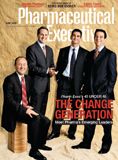Malvinder Singh, Ranbaxy Labs
S
Malvinder Singh
CEO, Ranbaxy Labs
RANK: No. 28 on Forbes' list of richest Indians (with brother Shivinder)
GOAL: To grow Ranbaxy to a $5 billion dollar company by 2012
For Malvinder Singh, age 35, Ranbaxy was never just a business. It's family. "My grandfather started the company in the early '60s," he explains. "My father was a PhD in pharmacy, and the two of them built the company together. From my childhood, they were living and breathing Ranbaxy. I would visit doctors, learn things, meet people."

Malvinder Singh
In 1994, his father took him on as a management trainee, starting him at the bottom of the ladder, and paying him less than other trainees to ensure he got no favoritism. Singh left briefly to pursue his MBA at Duke, but returned in 1998.
"My father was diagnosed with cancer," he says. "I could have had a job as an investment banker, but it was important for me to be with India with him. It was time to come back and join the company."
Today, as CEO, Singh is carrying on his father's goals of making Ranbaxy a truly global pharma company, extending the firm's customer base, making significant acquisitions, and forging high- profile deals with Big Pharma. "Big Pharma is in trouble," says Singh. "I see very substantial alliance partnerships with Big Pharma in the areas of biotech and supply chain and R&D, where we can partner and add value."

Addressing Disparities in Psoriasis Trials: Takeda's Strategies for Inclusivity in Clinical Research
April 14th 2025LaShell Robinson, Head of Global Feasibility and Trial Equity at Takeda, speaks about the company's strategies to engage patients in underrepresented populations in its phase III psoriasis trials.
Beyond the Prescription: Pharma's Role in Digital Health Conversations
April 1st 2025Join us for an insightful conversation with Jennifer Harakal, Head of Regulatory Affairs at Canopy Life Sciences, as we unpack the evolving intersection of social media and healthcare decisions. Discover how pharmaceutical companies can navigate regulatory challenges while meaningfully engaging with consumers in digital spaces. Jennifer shares expert strategies for responsible marketing, working with influencers, and creating educational content that bridges the gap between patients and healthcare providers. A must-listen for pharma marketers looking to build trust and compliance in today's social media landscape.
Pfizer, GSK Gain ACIP Recommendations for RSV and Meningococcal Vaccines
April 18th 2025The Centers for Disease Control and Prevention’s Advisory Committee on Immunization Practices voted to expand access to Pfizer’s respiratory syncytial virus vaccine Abrysvo for high-risk adults in their 50s and voted in favor of GSK’s meningococcal vaccine, Penmenvy, for streamlined adolescent protection.